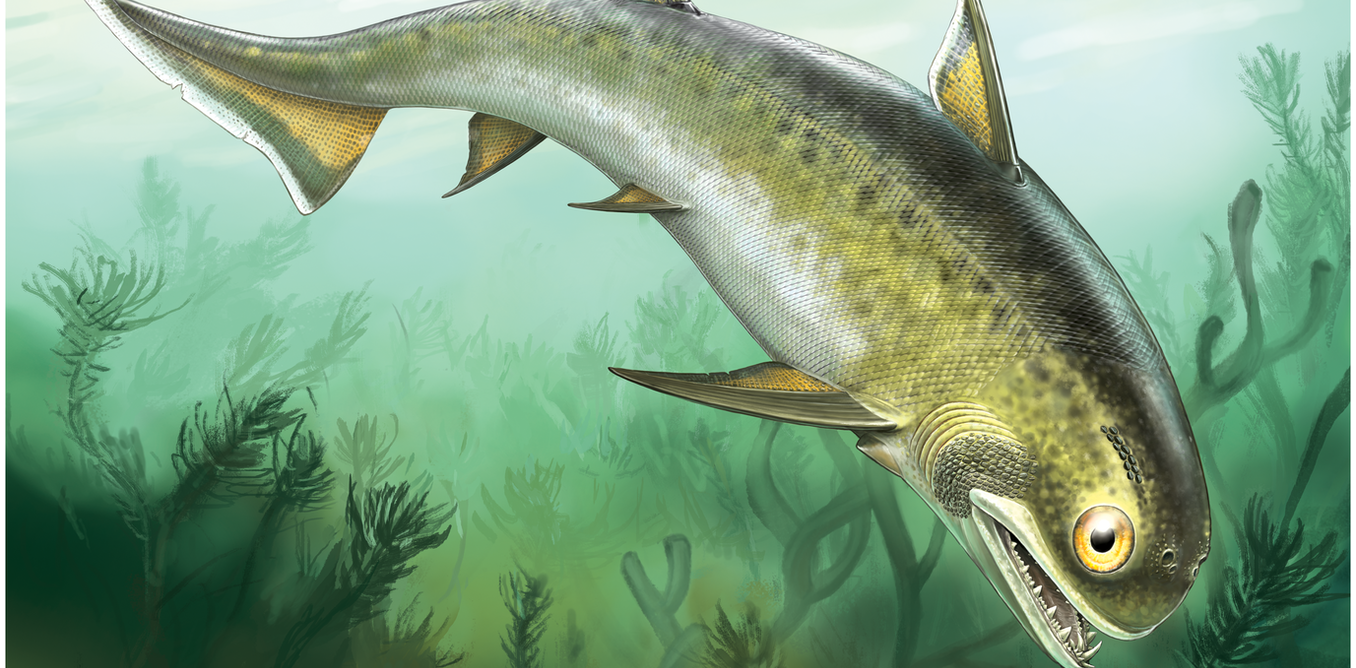
Evolution of a smile: 400 million year old spiny fish overturns shark theory of tooth origins
Teeth play a central role in the ecology of most vertebrates for catching prey, processing food and even attracting a mate. Its no surprise that scientists such as ourselves have long been interested in how teeth first evolved.For many years we regarded shark teeth, with their conveyor belt system of tooth replacement, as ancestral models for teeth.But recent advances in our field of research revealed that a group of spiny fishes known as the acanthodians were the first ancestors of modern-day sharks. We decided to dive in and make a detailed study of the teeth of acanthodians.What we found challenged the suitability of modern sharks as models for the earliest teeth.Shark teeth.K2-Kaji:PixabayWe studied acanthodian jaws from Canadas Arctic region. The fossils were preserved in limestone which we dissolved in acid, leaving jaws so well-preserved they could almost be mistaken for recently prepared bone, despite being more than 400 million years old. These precious fossils were transported to a synchrotron a type of particle accelerator at the Paul Scherrer Institute in Switzerland.X-raysIn a synchrotron, electrons are fired around a ring, producing a high energy x-ray beam. The x-ray beam can be used to scan fossils. The result is similar to a hospital CT scan which layers multiple X-rays on top of each other to create three dimensional images but at a far greater resolution: our scans had a resolution of 0.74 micrometres (0.00074mm).Such was the quality of fossil preservation and the scans that we could reconstruct a detailed three-dimensional growth history for these jaws and teeth, using specialised software.We discovered these acanthodians had two quite distinct forms of teeth. First, there were teeth attached to the jawbone in a sequence of rows. Second, at the front of the jaw, was a tooth whorl a semicircular arrangement of teeth which rotated as new teeth were added.The synchrotron.Philip Donoghue, Author providedThese results immediately sparked our interest, in part because these sets of teeth were so different from modern sharks, but also because they seemed so oddly familiar. In 2012 using synchrotron scans we described similar tooth rows in another extinct group of fishes, the placoderms. On the other hand, the tooth whorls looked almost identical to structures found in the oldest bony fishes, the group that is ultimately ancestral to humans.This led us to the question: did acanthodians with their combination of tooth whorls and tooth rows possess the ancestral form of teeth?Evolutionary treeWe wanted to test this hypothesis properly, and for that we needed to build an evolutionary tree of the vertebrates from the time during which teeth first appeared in the fossil record. Using this tree, we then performed thousands of simulations of the evolutionary history of teeth, producing probabilistic estimations of the ancestral tooth types.The results of these simulations completely turned our expectations upside down. Instead of showing the ancestral form of teeth, our acanthodians had actually evolved their tooth rows and tooth whorls completely independently from the other groups. What we had in fact found was a remarkable case of parallel evolution. We estimated that the ancestral form of teeth was pattern-free clusters of small, unspecialised teeth. From this starting point complex teeth had evolved many times, with different groups of vertebrates independently discovering the same solutions.Digital models of acanthodian tooth rows (left) and tooth whorl (right)Martin Rücklin, Naturalis Biodiversity CenterRead more: Prehistoric pigments reveal how melanin has shaped bird and mammal evolutionAll of this also means that the teeth of modern-day sharks tell us essentially nothing about the origins of teeth. The conveyor belt system of tooth replacement in sharks evolved as just one of many natural experiments during the early evolutionary history of teeth, one that happens to have survived to the present day. Unfortunately, this also means teeth in living sharks are not the best model in the search for therapeutic solutions to human dental problems.Our results do tell us something very interesting about the nature of tooth evolution. Teeth form independent units, or modules which gives them flexibility during development. This allows teeth to be adapted to form a bewildering array of diverse shapes, helping to explain the evolutionary patterns we observe.We found that once simple teeth evolved, there was an immediate explosion of adaptation. Arguably, this adaptive explosion never truly ended. Again and again during evolution, we see unusual and highly specialised teeth. The incisors of rodents, the beaks of parrotfish, and numerous other examples can be considered as more recent examples of a series of natural experiments that began more than 400 million years ago.
……Read full article on The Conversation
History Science
Comments
Leave a comment in Nestia App